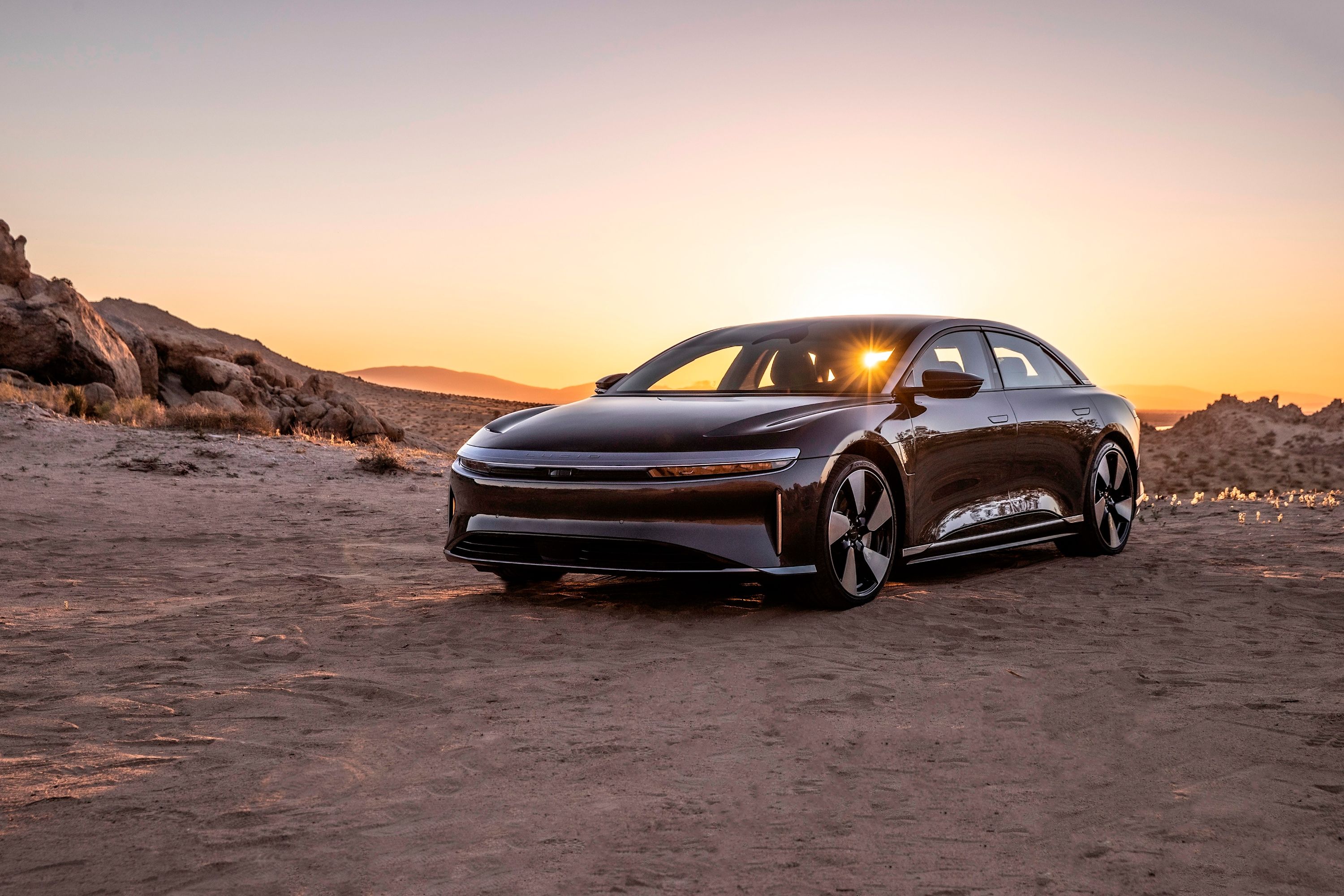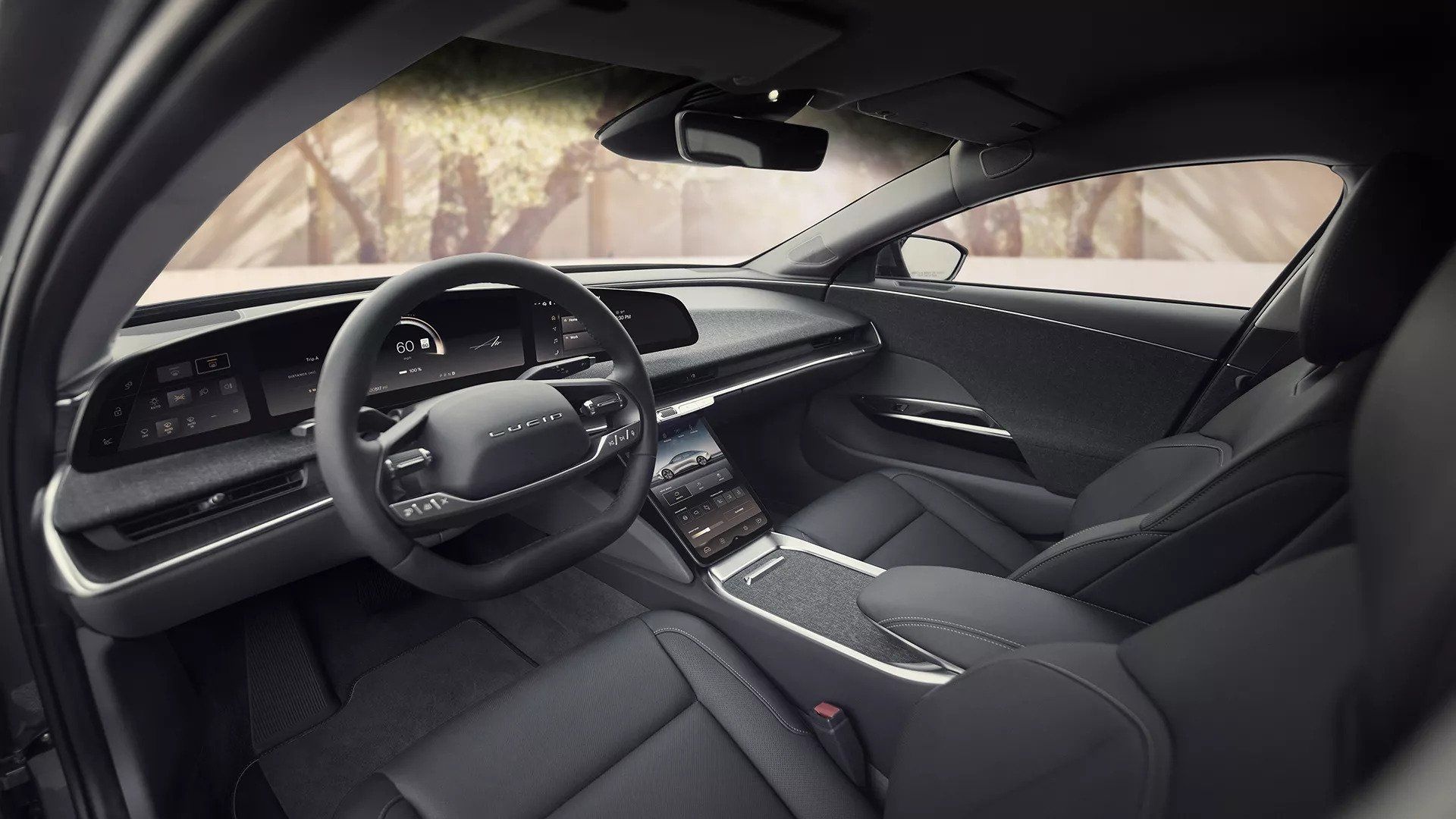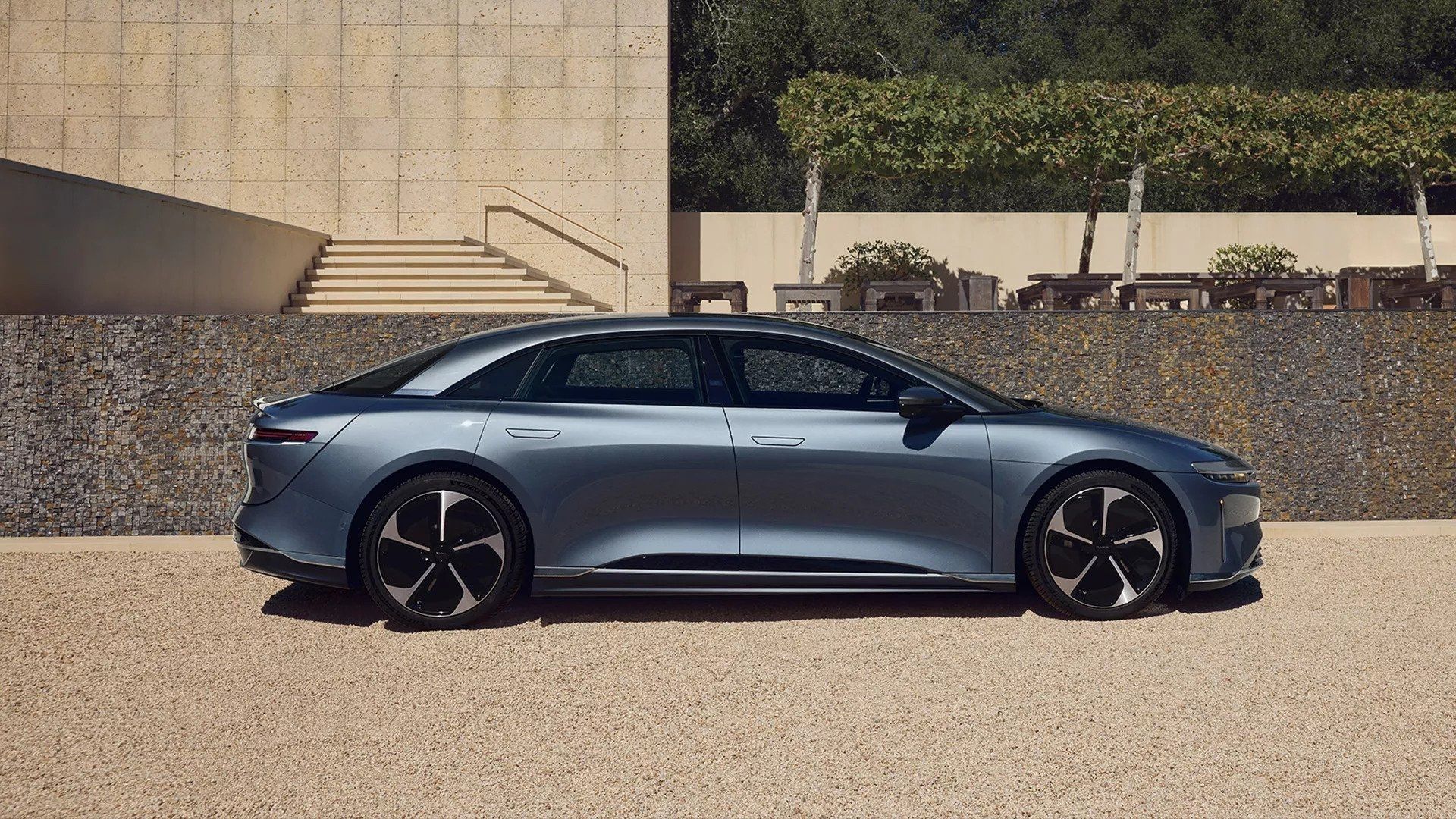
The trickle-down effect of expensive Lucid Air models has facilitated the birth of the relatively affordable Air Pure, which starts below $90,000, said a senior executive at the company.
Speaking with Automotive News, the brand's senior VP of design and brand, Derek Jenkins, explained that "all of the development of the high-end cars has trickled down to [the Pure] at a better entry-level price, but still with pretty remarkable specifications," adding that this has made the Air Pure the "hero of the group."
The entry-level Air Pure starts at just $87,400, while the top-tier Air Sapphire will start at just under $250,000. Despite that enormous gulf in pricing, the Pure is not a bare-bones offering that will make customers feel as if they have settled.
There are some concessions, of course. The expansive tinted glass roof seen on other models is replaced with a painted aluminum roof on the Pure, but at least you can have the car in a new color called Fathom Blue.
Other differences include interior fabric made from recycled fibers and a leather replacement, while more expensive models get genuine leather. But thanks to the retention of large infotainment screens, the cabin doesn't feel any cheaper, which goes a long way toward encouraging a buyer to opt for the entry-level vehicle.
The most significant differences are naturally found underneath the skin, where the luxury EV has less potential than its six-figure siblings.
Power figures for the Pure are yet to be released, but we know that the 92-kilowatt-hour battery pack will offer an impressive 410 miles of range. This is thanks, in part, to a remarkably low drag coefficient value of just 0.197 - even better than the Mercedes EQS could manage, and that was once the most aerodynamic production vehicle in the world with a figure of 0.20 Cd.
Fortunately, the automaker is not stopping here. An earlier report from Automotive News revealed that the company intends to produce a smaller midsize platform later this decade, with the goal of producing vehicles that cost as little as $50,000. It may also license its tech to mainstream automakers to help bring about an EV that costs just $25,000.
And all of that is possible because of pricy high-end vehicles. The prices of premium cars may be difficult to stomach right now, but at least they have a long-term benefit for the average consumer.


